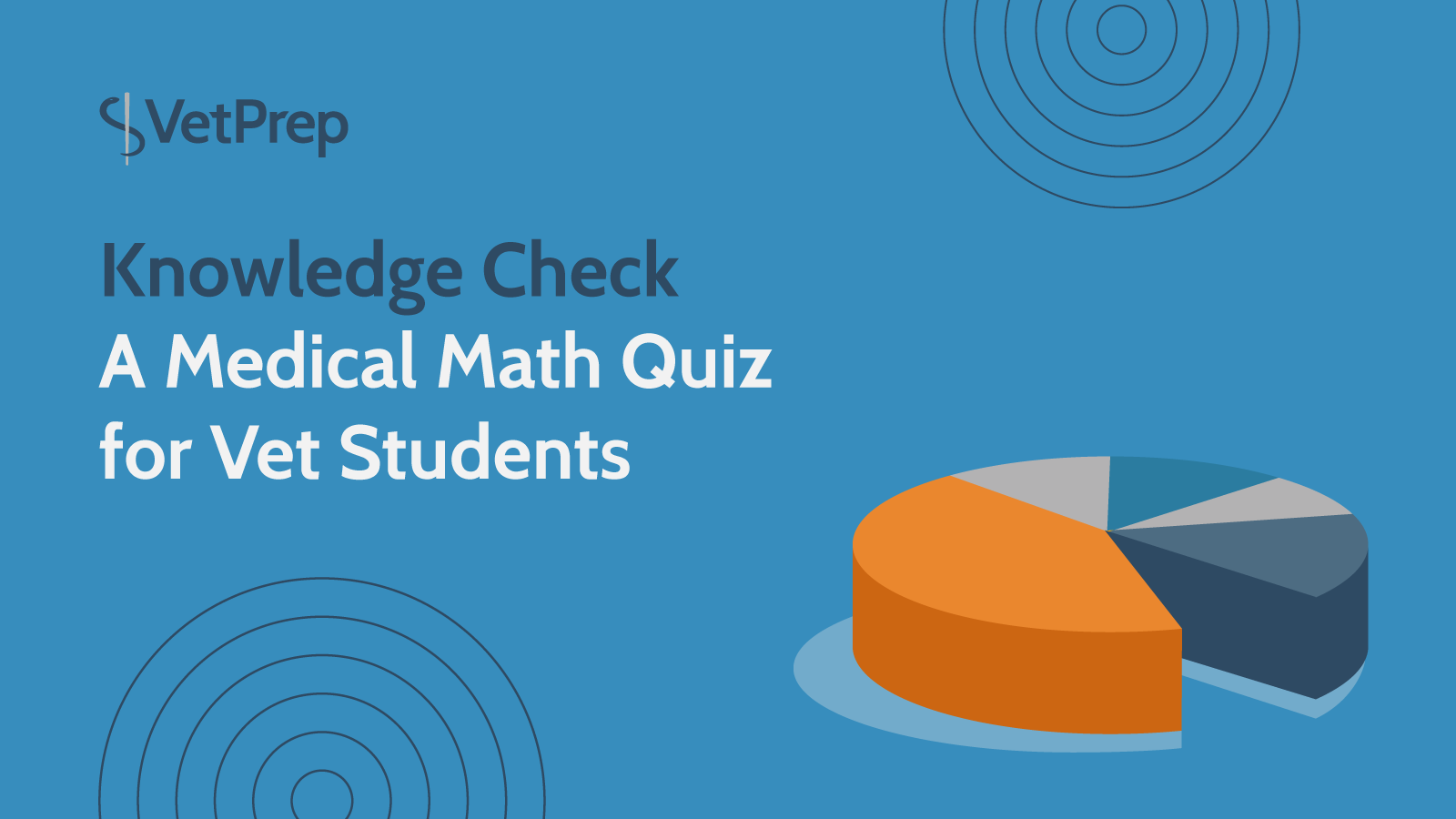
 When you envision giving a blood transfusion, you might imagine a scenario where you’re immediately leaping into action during a high-pressure situation. Unfortunately, nothing could be further from the truth! Even after you have performed your crossmatches to confirm compatibility, you will still need to sit down at your desk and spend a few minutes on math.
When you envision giving a blood transfusion, you might imagine a scenario where you’re immediately leaping into action during a high-pressure situation. Unfortunately, nothing could be further from the truth! Even after you have performed your crossmatches to confirm compatibility, you will still need to sit down at your desk and spend a few minutes on math.
Let’s look at these calculations through the lens of a case study.
You are treating a 13 kg MN mixed breed dog named Scout. Scout is anemic, with a PCV of 15%, and you would like to administer a transfusion that will bring his PCV up to 35%. Your blood donor, Skippy, is a MN mixed breed dog weighing 32 kg. Skippy has a PCV of 42% today.
How much blood should you transfuse? Answering that question requires some math!
How much can Skippy safely donate?
Your first step is to determine how much blood Skippy can safely donate. You consult a reference and are reminded that you can safely remove 15% of a dog’s blood volume before you must provide replacement fluids, or up to 20% of the blood volume if IV fluids are provided after donation.1
First, you must calculate Skippy’s blood volume. The blood volume of a dog is estimated at 90 ml/kg, so you perform the following calculation:
(90 ml/kg) x (32 kg) = 2880 ml total blood volume
Next, you must determine how much blood Skippy can safely donate:
Without post-donation fluids:
(2880 ml) x (0.15) = 432 ml
With post-donation fluids:
(2880) x (0.2) = 576 ml if replacement fluids are administered
Based on these calculations, you know that Skippy can donate a maximum of 432 ml without a need for replacement fluids. You can go higher if necessary, up to a maximum of 576 ml, but replacement fluid therapy will then be required.
How much donor blood should Scout receive?
Next, you want to determine how much donor blood Scout will need, in order to reach your desired post-treatment PCV of 35%.
While a number of equations have been described, you opt to use the following:2
Transfusion volume = (Desired PCV - Current PCV) / (Donor PCV) x blood volume (ml/kg) x weight (kg)
Using the information you have available, it’s now time to plug and chug:
Transfusion volume = (35 - 15) / (42) x 90 ml/kg x 13 kg
= 20/42 x 90 ml/kg x 13 kg
= 0.48 x 90 ml/kg x 13 kg
= 561.6
Based on this math, you decide you want to transfuse 562 ml of Skippy’s blood into Scout.
Is this plan feasible?
Finally, look back at your calculations to see how much blood Skippy can safely donate. In this case, you determined that you can safely draw up to 576 ml of blood from Skippy, as long as you administer IV fluids after the donation. This means that your desired collection volume of 562 ml is well within the safe range for Skippy. Therefore, you advise your techs to begin collecting 562 ml of blood from Skippy and to plan to administer IV fluids to him immediately after his donation.
Now that you have finished these calculations, you can finally get up from your desk and proceed with overseeing the process and monitoring your patients! There’s no denying that blood transfusion preparation is time-consuming, but it is an essential part of the process. It’s important to plan accordingly and allow yourself adequate time to do the “mental work” associated with transfusions.
Looking for more Medical Math Questions for Vet Students?
References
- Butler A. Practical transfusion medicine (Proceedings). DVM360. 2011.
- Davidow B. Transfusion Medicine in Small Animals. Vet Clinic North Am Small Anim Pract. 2013 Jul;43(4):735-56.



